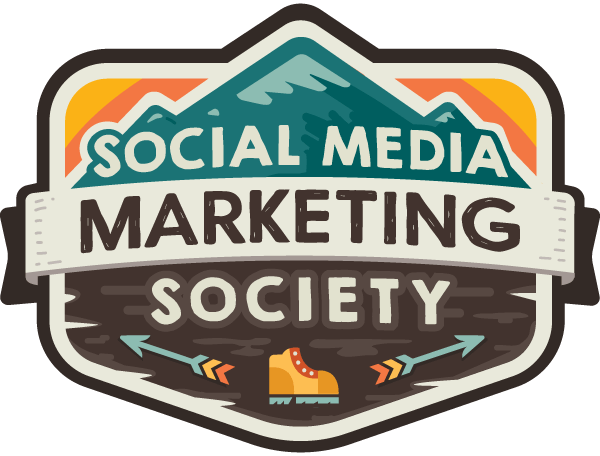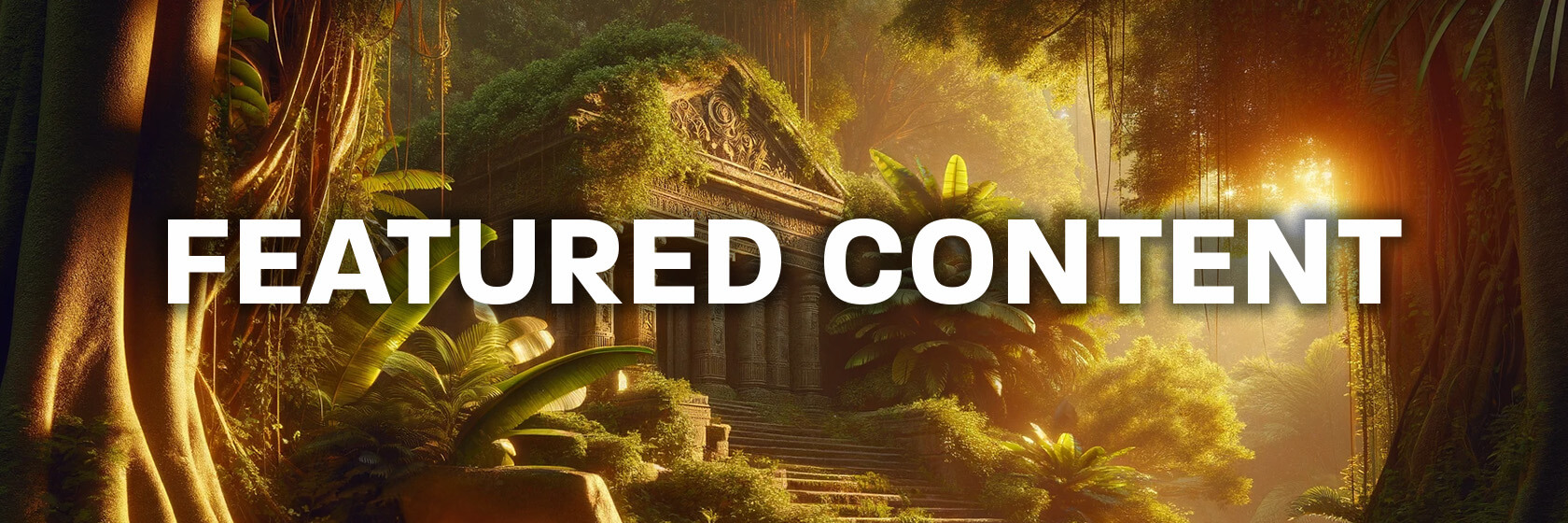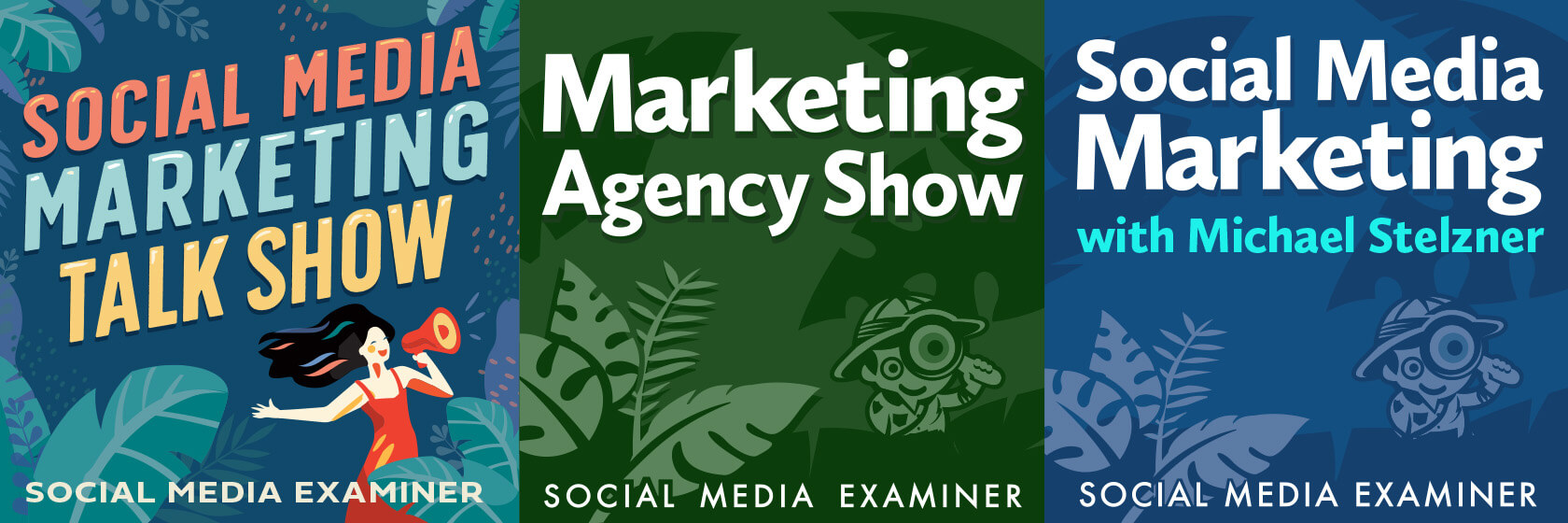Today's Guide to the Marketing Jungle from Social Media Examiner... | Presented by |  |
It's D.E.A.R. Day, Alluser... Drop everything and 📖 read! We can do that.
In today's edition:
-
Today's 👉 Tip of the Day is for YouTube
-
🛑 Stop AI from using your intellectual property
-
🟰 Aligning expectations of marketing with reality
-
Don't overlook this 🧨 marketing interaction
-
👻 Snapchat partner program
-
TikTok's 🖼️ photo posts app
-
Improved 🖇️ Messenger features
-
📣 Additional industry news from LinkedIn, Meta, YouTube, and more

Wondering how to run YouTube ads on a budget?
Use a Maximum Cost-Per-View Strategy
On YouTube, ads served on computers tend to drive more leads and sales, while ads on mobile drive more channel subscribers. Choose placements based on your goal and start your campaign at $5–10 per day, targeting only YouTube search and video networks.
Monitor the analytics over time, pausing low-performing keywords and demographics to optimize your campaigns while controlling your daily ad spend.
Today's tip is inspired by Tom Breeze, a featured presenter in the Social Media Marketing Society.

Want to Know How AI Really Works?
As AI becomes increasingly integrated into our marketing, you may be wondering how to navigate—and succeed—in this evolving landscape.
Christopher Penn, an AI expert with over a decade of experience, will help you understand what the possibilities and risks are with AI. More importantly, you'll discover how to adapt your current marketing strategies to win with AI.
This training is only available to members of the Social Media Marketing Society. Join today and you'll immediately get access to 100+ training sessions—including this one.
Become a member of the Society now.

How to Protect Your Intellectual Property in an AI-Driven World
As artificial intelligence (AI) becomes more advanced, protecting your intellectual property is crucial. Your unique content, whether writing, artwork, music, or other creative works, sets you apart and provides value to your audience. However, with the increasing use of AI in content creation and distribution, AI models could train on your work or replicate it without your permission, risking your intellectual property rights.
Terms of Service
When using social media and content-sharing platforms, it's important to understand the terms of service. This is to ensure you're not unintentionally giving away the rights to your content. Many platforms have terms that allow them to use your content for their own purposes, such as training AI models. Therefore, it's crucial to read the fine print carefully and fully comprehend the rights you're granting when you post your content.
Start by reading the fine print on any platforms or tools you use to create or share content. Look for language around intellectual property rights, and ensure you're comfortable with the terms before agreeing to them. Pay particular attention to user-generated content, licensing, and data usage sections. If the terms are unclear or overly broad, consider seeking legal advice or using alternative platforms that offer more protection for your content.
Prompt Chaining
If you're using AI tools to create content, be mindful of how you input prompts or instructions. Use specific, unique language and avoid using generic or common phrases that others could easily replicate.
This is where techniques like prompt chaining can be helpful. Prompt chaining involves breaking down a task into smaller, more specific steps and providing the AI with instructions. By using unique and detailed prompts, you can create more distinctive content that is difficult to replicate.
For example, instead of asking an AI to "write an article about social media marketing," you might use a series of prompts like:
-
Research the latest trends and statistics in social media marketing, focusing on platforms like Instagram, TikTok, and LinkedIn.
-
Outline a 1000-word article with an introduction, three main points, and a conclusion.
-
For each main point, provide specific examples and case studies of successful social media marketing campaigns.
-
Use a friendly, conversational tone and include practical tips for readers to implement in their own social media strategy.
-
Conclude with a summary of the key takeaways and a call-to-action for readers to experiment with new social media marketing techniques.
By using specific and detailed prompts, you can guide the AI to create content more aligned with your unique perspective and style.
Style Development
Consider diversifying your writing style or using creative techniques like storytelling or analogies to make your content more distinctive and harder to replicate. The more unique and personal your content is, the harder it will be for AI to mimic it convincingly.
For example, you might incorporate personal anecdotes, humor, or metaphors into your writing to give it a distinctive voice. You could also experiment with different formats, such as writing in a conversational style, using bullet points or numbered lists, or incorporating multimedia elements like images or videos.
Copyright
If you're concerned about your content being used to train AI models without your consent, consider asserting your ownership rights using copyright notices or watermarks. While these measures aren't foolproof, they can help deter unauthorized use of your content and make it easier to prove ownership if infringement does occur.
A copyright notice typically includes the copyright symbol (©), the year of publication, and the name of the copyright owner. For instance: © 2023 John Smith. You can include this notice on your website, social media profiles, or within the content itself.
Watermarks are another way to assert ownership of visual content like images or videos. By overlaying a semi-transparent logo or text on the content, you can make it clear that it belongs to you and discourage others from using it without permission.
Finally, stay informed about the latest developments in copyright law and intellectual property protection as they relate to AI. As the technology evolves, so will the legal and ethical frameworks governing its use. By staying up-to-date and advocating for creators' rights, you can help shape the future of AI and content creation in a way that benefits everyone.
Today's advice is provided with insights from Ben Angel.

How to Manage the Expectations of Non-Marketing Stakeholders
Wondering how to avoid situations in which the reality of what your marketing team can provide falls short of what others expect or believe is possible?
Whether you're an in-house marketer or a freelance consultant, effective communication is essential for ensuring that all stakeholders are on the same page regarding marketing campaigns.
These tips can help you avoid misunderstandings and misaligned expectations:
Listen
It's easy to assume you know what the business you serve needs, but that's not true if you work in a silo. One of the most important things you can do is genuinely listen to the challenges and goals of external stakeholders and share yours. For example, another department might want to do something your team lacks the resources or workforce to support.
Instead of giving someone a flat "No," engage in active listening to build trust and show you value their input and want to help. Ask open-ended questions and give them space to express their thoughts and concerns. By understanding their perspective, you can better tailor your approach and solutions to meet their specific needs as closely as possible.
Set Clear Expectations for Scope and Outcomes
Develop an onboarding process that keeps all stakeholders updated on your progress. Walk them through your communication channels, methods, and who their main points of contact will be.
Before beginning a new campaign, align everyone on brand guidelines, messaging, and objectives. Then, clearly outline the scope of work you'll provide, the timeline, and the metrics for success.
Pro Tip: If your company is launching a new product or service, send key stakeholders an intake form to gather key information about pertinent goals, target audience, and more.
Focus on Data-Driven Results
Non-marketing stakeholders can sometimes get caught up on vanity metrics or individual posts that perform well in the short term. Educate them on taking a long-term view of analytics and trends and detail the metrics that will tie back to their business goals. By focusing on data-driven results, you can demonstrate the value of your work and how you make informed decisions to optimize your strategies.
It's also important to be upfront that while some aspects of marketing, like brand awareness, can be difficult to measure, social media and digital marketing do play a significant role in the larger picture of business.
Communicate Openly
By keeping everyone informed and aligned, you can catch potential problems early and ensure that projects stay on track.
Within your team, encourage open communication and collaboration among your team members.
Similarly, schedule frequent meetings with internal department heads so everyone is informed about your progress and aware of obstacles you're facing.
Have a Process for Handling Misaligned Expectations
Despite your best efforts, there may be times when expectations don't align with reality. When issues arise, approach the situation objectively, referring back to the scope of work you outlined, and use data where possible to support your case.
Regular tracking and analysis will make sure you have up-to-date documentation to reference.
Today's advice is provided with insights from Kevin Kwok.

The One Marketing Interaction You're Overlooking
In the hustle of daily life, the way we conclude our interactions often becomes an afterthought. Yet, these final moments hold immense power. How you close communications can shape how people think and feel about your brand long after the moment has passed.
The goal is to end a conversation in such a way that your lead or customer feels valued, understood, and respected. It's not just about the words you choose.
The emotional echo you leave behind can resonate stronger and longer than the specific words you use. This final interaction becomes the most memorable aspect of your encounter, defining how leads or customers remember you.
In the professional world, this can open or close doors to future collaborations. On a personal level, it can instill or destroy trust and likeability.
The Way You Say Goodbye
A memorable goodbye is the art of ending on a high note. It's your final act in the play of social interaction, and it's what the people who talk to you in comments or direct messages (DMs) will remember.
As you close your comms, be sure to use their name more often, underscoring that you recognize them as a unique individual in every interaction.
Next, highlight a specific aspect of the interaction that you appreciated. Maybe you learned something while answering their question. Perhaps they were especially easy to help. Maybe they helped you identify a gap in your service or processes.
A well-executed goodbye doesn't just end a conversation—it actively plants the seeds for future interactions. It's a strategic investment in the relationship bank, making private communication more likely and more welcomed. This is especially crucial during the nurturing and consideration stages of the customer journey.
To subtly reinforce the idea of an ongoing relationship, making it easier and more natural for you and your lead to reconnect, opt for phrases that imply future conversations or a meeting instead of a definitive goodbye.
Finally, a genuine smile conveys warmth and makes the other person feel valued. Try adding an emoji or a custom gif to include a smile as you sign off.
Today's advice is provided with insights from Katie Rudy.

🗞 Alphabet + Hubspot: Reuters is reporting that Alphabet is weighing an offer to buy Hubspot. Source: Reuters
🗞 Snap Partner Program: The recently announced Snap Advanced Partner Program will provide qualifying agencies and partners exclusive ways to collaborate closely with Snapchat. Participating agencies and partners who meet the program's criteria will receive an exclusive badge, recognizing their expertise and partnership with Snapchat. They will also gain access to a tailored package of educational and business options designed to help them advance their knowledge and proficiency in utilizing Snapchat's platform. Additional benefits include personalized training and enablement sessions, dedicated support from Snapchat, and more tools and resources to enhance their Snapchat marketing efforts. Snapchat is also introducing new features to streamline the buying, managing, and measuring processes for partners and their clients. Some of these features, such as bulk invoice downloads, campaign management, improved member invites, and cross-organization asset sharing, are already available. Source: Snapchat
🗞 X Follower Count Disruption: The platform is launching a major initiative to proactively remove accounts that violate its rules against platform manipulation and spam. The company acknowledges that while they strive for accuracy in identifying and removing these accounts, they are taking a broad approach to ensure the platform remains secure and free of bots. Due to this wide-reaching action, users may notice changes in their follower counts. X recognizes the possibility of inadvertently affecting some legitimate accounts and encourages users to submit an appeal through a provided form if this initiative mistakenly impacts their account. Source: X
🗞 Updates to Meta's AI Content Labeling: Meta will start labeling a more comprehensive range of video, audio, and image content as "Made with AI" when they detect industry-standard AI indicators or when people self-disclose that they are uploading AI-generated content. Meta may add more prominent labels if the AI content poses a high risk of deceiving the public on important matters. Meta will begin the new labeling in May 2024. In July, they will stop removing content that only violates the manipulated video policy, giving users time to understand the new self-disclosure process. Source: Meta
🗞 Threads API in Testing: Threads is testing its API with a few third-party partners: Grabyo, Hootsuite, Social News Desk, Sprinklr, Sprout Social, and Techmeme. Access to the Beta is limited now, but the API is expected to roll out broadly by the end of June. Source: Meta
🗞 Enhanced TikTok Ads Management: TikTok Promote, a mobile-first advertising platform, is integrating with TikTok Ads Manager to provide users with a more powerful and efficient advertising experience. This integration allows users to manage their Promote and TikTok Ads Manager campaigns from a single platform, accessible on desktop and mobile devices. Source: TikTok
🗞 Photo Sharing on TikTok: TikTok confirmed it is developing a new app called TikTok Notes, which will allow users to share photos and text posts. The company has been sending notifications to some users about the upcoming app, indicating that their existing photo posts will be automatically shared on TikTok Notes unless they opt out. Source: TechCrunch
🗞 X Login Security: The platform expanded Passkeys access to all iOS users. Source: @Safety via X
🗞 YouTube Shopping: YouTube has announced the launch of several new Shopping features. Shopping Collections allows creators to curate products from their favorite brands for users to browse. Creators can select products based on themes, such as everyday makeup looks or capsule wardrobes, and these collections will appear in their product lists, Store tabs, and video descriptions. Initially, creators will be able to create Collections using the Studio app on their phones, with plans to launch the feature on desktop soon. A new Affiliate Hub provides creators with easy access to information about Shopping partners, competitive commission rates, and promotional codes. The hub will also let creators request product samples from top brands, making it easier for them to plan their next shoppable video. Furthermore, Finally, YouTube is expanding its list of integrated platforms by adding Fourthwall, a website builder that helps creators build shops. Source: YouTube
🗞 Meta Ads: Meta is facing criticism from advertisers claiming that ongoing issues with the company's algorithm significantly impact campaign performance across its platforms. Brands report that sales and return-on-ad-spend have plummeted, while cost-per-click and cost per 1,000 impressions have tripled in recent months, with no explanation from Meta. In response to these claims, Meta admitted that some technical issues had impacted ads but denied that the problems were widespread. A spokesperson told Bloomberg that their ads system is working as expected for most advertisers and that they have recently fixed a few technical issues. Source: Search Engine Land
🗞 LinkedIn Collaborative Articles: LinkedIn has introduced a new feature called "Contribute Expertise" that allows users to easily find and contribute to Collaborative Articles related to their areas of expertise. This new shortcut within the post composer streamlines discovering and participating in relevant Collaborative Articles. Source: Social Media Today
🗞 Messenger Enhancements: Meta has announced several new features for Messenger. Users can now send clearer, crisper photos in high definition by selecting an image from the chat composer, turning on the HD toggle, and tapping send. Messenger now allows users to create shared albums with friends to organize and reminisce over memories and moments from group chats. Messenger has also introduced a new way to add connections using a QR code, eliminating the need to type out someone's name or number. Lastly, Messenger now supports sending files up to 100MB directly from a user's phone, including all major file formats such as Word, PDF, and Excel, without relying on email for large file transfers. Source: Meta
🗞 Snapchat Ad Measurement: The platform has announced a new partnership and integration with Snowflake to provide advertisers with encrypted, privacy-safe, and effective ad solutions and signal measurement. The integration with Snapchat, set to roll out in the coming months, will allow Snowflake clients to quickly implement Snap's Conversions API (CAPI) signal solution without the need for bespoke back-end integration, streamlining the technical processes involved and enabling marketers to implement it in a matter of days or even hours. This will allow Snowflake customers to seamlessly share targeting and conversion data to drive better performance for their Snapchat campaigns. Source: Snapchat
What Did You Think of Today's Newsletter?
Did You Know?
Licorice root has been used to create foam for fire extinguishers.

Michael Stelzner, Founder and CEO
P.S. Add
michael@socialmediaexaminer.com into your contacts list. Use Gmail?
Go here to add us as a contact.
We publish updates with links for our new posts and content from partners. Your information: Email:
tukangpostoemel@gmail.com Opted in on: 2021-09-06 17:20:47 UTC.










